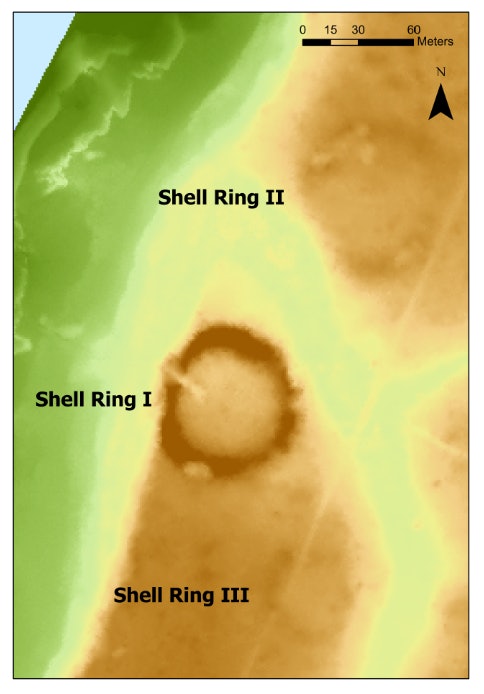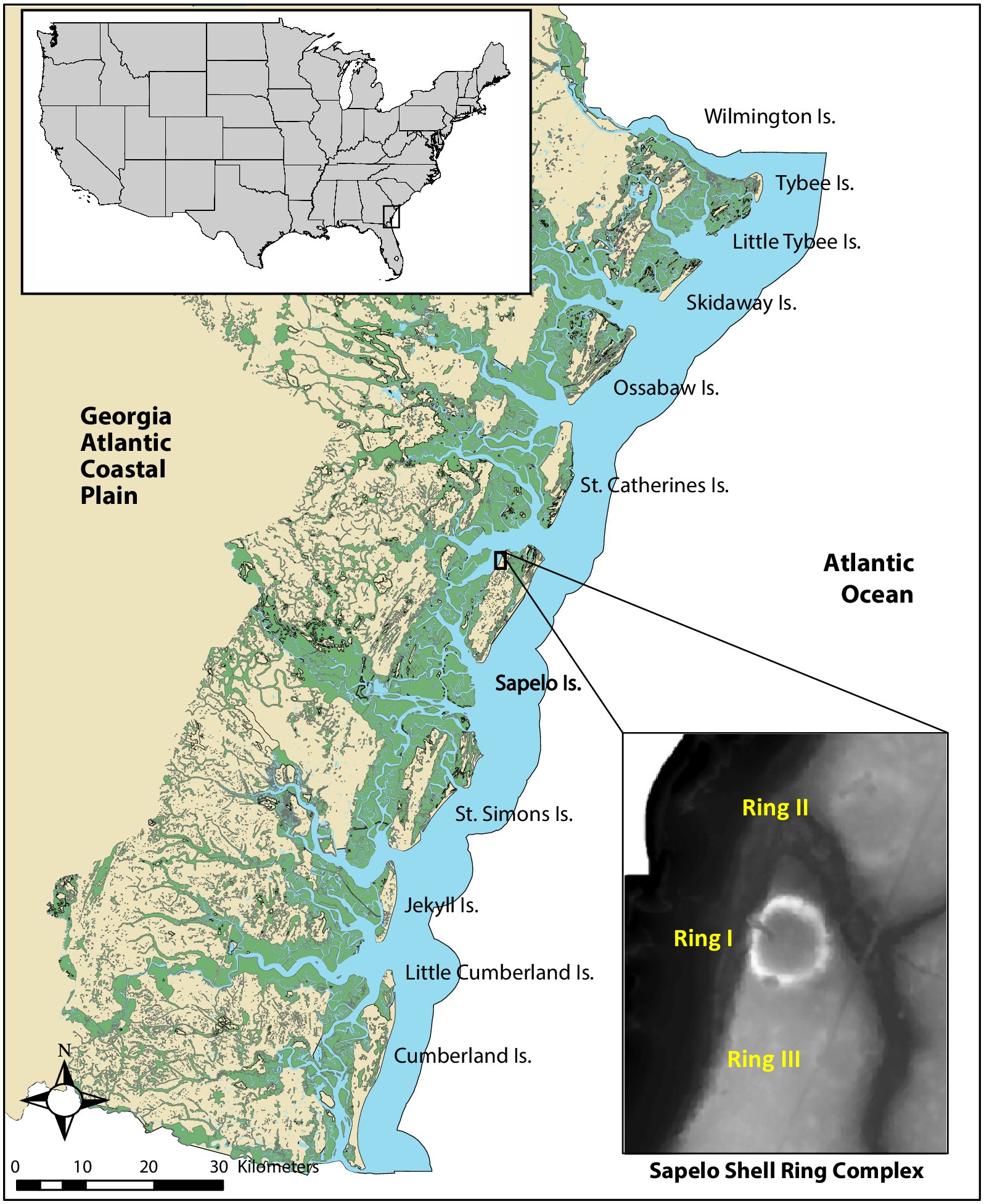
On a barrier island off the coast of McIntosh County, Georgia, archaeologists have been scrutinizing mounds of leftover shells, bones, and other artifacts. These heaps of debris, known as shell rings, might contain clues of how Native Americans of the ancient past adapted to climate change.
According to a new study published last week in PLOS One, researchers may have found evidence in an unlikely artifact: an oyster shell. The findings may reveal how environmental changes helped shape “societal transformations” among Native Americans living in this region roughly 4,000 years ago.
What’s new — Scientists analyzed oysters in three different “shell ring” villages located on Sapelo Island, which emerged during the late Archaic period between 3000 and 5000 years ago.
Shell rings consist of mounds of shells, bones, and other artifacts. Archaeologists believe Native Americans constructed these shell rings, which are some of the earliest evidence that villages existed along the South Atlantic coast. The Muscogee Nation, among other Indigenous tribes, lived in this area for thousands of years from the late Archaic period until Europeans colonized the islands in 1757.
Hidden within the oyster’s shell, archaeologists uncovered “a clear pattern of environmental fluctuations throughout the period in which the rings were occupied.” In other words: Ancient climate change occurred in these Native American villages as a result of rising sea levels, changing temperatures, and a wetter climate.
Further analysis highlighted the time periods in which the Native Americans occupied these three villages, as well as the size of oysters in each village. According to the paper, Native Americans occupied only one of the shell rings — known as Ring III — in the final years before they abandoned the island villages altogether, roughly 3845 years ago. The oysters in Ring III were also considerably smaller than the oysters in the other villages.
These findings offer an answer to a longstanding mystery: Why did ancient Native Americans form — and later abandon — these shell ring villages?
The scientists believe that as environmental shifts threatened the harvest of oysters some 4300 years ago, people banded together to form shell villages to more effectively manage fisheries in the wake of climate change. But after several generations, further environmental changes, and the collapse of oyster harvesting, the Native Americans abandoned these shell ring villages and adopted a lifestyle that was less dependent on seafood.
“This study provides the most comprehensive evidence for correlations between large-scale environmental change and societal transformations on the Georgia coast during the Late Archaic period,” the researchers conclude.

Why it matters — The study shows a clear link between climate change and the development of villages in pre-farming, hunter-gatherer societies.
“The emergence of village life and adaptation to coastal environments are key transitions in human history,” according to the paper.
In adapting to a changing environment, Native Americans also transformed their own societies. Therefore, the oyster shell analysis provides a fascinating insight into how these societies responded to environmental changes and created a culture around their food resources, such as oysters. The data paints a picture of “how these early villagers negotiated environmental change...across decades and generations.”
The findings also connect environmental shifts — wetter environments that affected salt levels in water — to changing oyster sizes over time. The results support previous research that Native Americans sustainably harvested oysters for thousands of years, challenging a popular argument that unsustainable human practices were responsible for harming oysters during this time.

How they made the discovery — From Sapelo Island’s three shell ring villages, researchers collected oyster shells and samples that they could use for radiocarbon dating, such as hickory nut fragments.
Radiocarbon dating is a process that allows researchers to determine the dates of living organisms by measuring the amount of radiocarbon — also known as carbon-14 — in artifacts like shells, bones, and charcoal fragments. This process helped the researchers determine time periods when Native Americans occupied each of the three shell villages.
The researchers further measured the changes in oyster sizes over time since healthier ocean reefs typically produce larger oysters. Human harvesting and environmental change can affect the size of oysters, so shifting oyster sizes can often reveal details about climate change and human practices.
The combination of these methods, along with statistical modeling, allowed the archaeologists to “understand the nature and timing of environmental change associated with the emergence and abandonment of circular shell ring villages on Sapelo Island, Georgia.”
What’s next — Even as the Native Americans on Sapelo Island developed cultural ties to this region, they were able to effectively adapt to “to changing circumstances and continue to occupy these coastal regions for millennia” in ways that built on knowledge accumulated from previous generations, according to the researchers.
The findings are not just history lessons. They also provide insight into our present-day struggles to adapt to climate change.
Native Americans’ experiences on Sapelo Island offer “a valuable lesson as a host of our current coastal cities and landmarks experience shifting climate and seas,” the scientists conclude.







